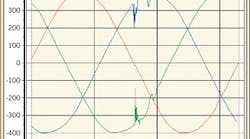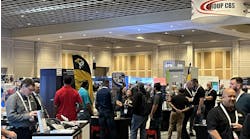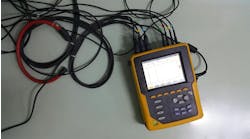Have you just spent another day at the office fighting with computers? Join the club. Besides viruses, malware, and software, is it possible that something else may be causing your computer problems? It can't be the power — after all, the salesman assured you that the Whiz Bang X1000 super integrating-differentiating surge suppressor would protect your equipment. Must be those stupid computers!
Somewhere in this scenario — usually after a lot of pain and loud discussions — someone decides to actually look at the quality of the electrical power serving the computer equipment. This isn't necessarily a simple task. It requires the use of sophisticated power monitors to record unwanted power anomalies. The real issue is not every person has the ability or interest to address the problem. However, electrical contractors, field service personnel, and electrical utility engineers are frequently the ones called upon to remedy these situations.
The use of a quality power monitor may demonstrate that the Whiz Bang surge suppressor doesn't work, and changing that device for something better is a correct course of action. But what about other equipment in the facility? Are these pieces of equipment adversely affected as well? Maybe you should expand your investigation to track down the real source of the problem.
In normal commercial environments, there are obvious candidates that attract attention, such as elevators, air conditioners, variable-speed drives, and refrigerators — but what about the coffee pot sitting next to the file server? When you get down to it, the list of culprits is pretty extensive. However, one thing becomes clear very quickly: While one power monitor is adequate to determine there is a problem, it will take more equipment to track down the source.
Case in point
At one site last year, we encountered a series of repeating but seemingly random transient voltages. The transients (and waveform notching) were initially recorded at the service entrance with a power monitor (Fig. 1). The voltage-only event capture doesn't really answer the origin question, although you could possibly deduce an origin within the facility on the basis of frequency content.
Origin is very important. Did the random transient voltages come from the utility source? And did they originate inside the building? If so, where? The transient voltages are on two phases — does this make the culprit a 480V single-phase load, such as an air conditioner? How about a single-phase 120V load passing the transients back through a delta-wye transformer?
To answer these questions, we installed additional power monitors equipped with current probes. These other monitors (located at downstream panelboards) recorded the events and also showed a correlating increase in current during the events (Fig. 2). This data showed that loads within the building were the sources.
Eventually, we tracked the transient currents to individual circuits within one panelboard and finally to the loads responsible for the transients. Was it the air conditioner as originally suspected? Nope. Was it some major load inside the building? Wrong again. The sources turned out to be compact fluorescent downlights in a bathroom that were controlled by a motion sensor.
The inrush current in the front end of each lamp ballast behaved like a short, sharp pulse. This pulse of current, in turn, interacted with the inductance of the facility wiring and transformers (-V=Ldi/dt), resulting in notches and transients. Our suggested solutions included changing out the bathroom light fixtures to a different type, adding inductance in the branch circuit to limit the inrush when the fixtures were activated by the occupancy sensor, or rewiring the bathroom lighting branch circuitry into more circuits with smaller groupings of controlled light fixtures.
Lessons learned
What can you learn from this case study? First, you can use one power monitor to determine that a problem exists, but you may need to rely on more monitors to find the source. Second, you must use monitors that either cross trigger the current channels when transients are recorded on the voltage channels, or they must have individual triggers for the current channels. Third, you should recognize that a sudden increase in current that accompanies a sudden notch in a voltage waveform means an in-house load is the true culprit. Finally, you have to assume that the troubleshooting process may be time consuming.
In the case study discussed above, there were only a few major 42-pole panelboards to worry about. An investigation into one panelboard led to identification of the circuit. Once this was done, we were able to track down the culprit load by following the circuit.
Shaughnessy is vice president of PowerCET in Santa Clara, Calif.



